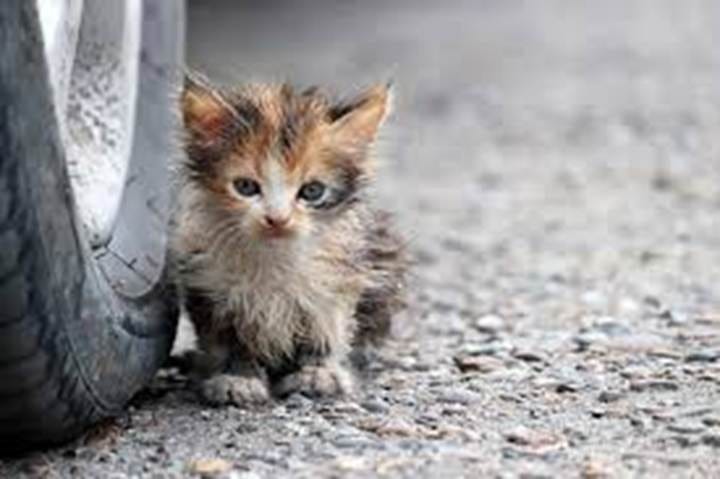“A Friendly Cat Is Not a Throwaway”
San Diego Court Finds Humane Society’s Feral Cat Policy Violated State Law
“Returning a cat with signs of ownership to the street may violate Penal Code §597s.”
— San Diego Superior Court, June 2025
🚨 Note 06/10/2025 9:17p.m.:
Don’t Be Misled by SDHS’s Public Statement
In an article published today by CBS 8, the San Diego Humane Society claimed the court supported their Community Cat Program. That is false and misleading.
The court ruled that SDHS’s previous policy was unlawful—specifically for excluding cats with signs of ownership and failing to protect kittens.
Compliance was only achieved after the trial, when SDHS quietly revised its policy in February 2025.
The court approved that new version. It did not endorse the actions that led to this lawsuit.
In case there’s any confusion: the San Diego Superior Court did not give SDHS a clean bill of health. It found violations. It required reform. It ordered compliance. This is not a win—it’s a warning.
*****************************************************************************************************
HERE’S THE SCOOP!
In a pivotal legal decision with statewide implications, the San Diego Superior Court ruled in June 2025 that the San Diego Humane Society (SDHS) violated California law by refusing to admit certain cats into its shelter system, cats that showed clear signs of past ownership. The case, brought by the Pet Assistance Foundation and others, challenged SDHS’s use of a “Community Cat Program” (CCP) that, until recently, routed healthy cats found outdoors back to the streets unless the finder could prove ownership.
The court didn’t just criticize the policy. It called it what it was: a legal failure to protect abandoned animals.

⚖️ The Legal Heart of the Case
California law is explicit:
Civil Code §1816(c) requires any public agency or shelter to “take charge” of animals believed to be abandoned.
Penal Code §597s makes it a misdemeanor to “willfully abandon” an animal.
SDHS argued that unless a cat had verifiable proof of ownership, like a registered microchip or ID tag, it could be classified as a “community cat” and returned to the field, even if it was friendly, healthy, sterilized, or wearing a collar.
But the court rejected this.
Instead, the ruling held that a wide range of indicators, such as recent veterinary care, a non-registered chip, a collar indentation, or sterilization without an ear tip, are sufficient to qualify a cat as abandoned. That status, in turn, legally obligates shelters to admit and care for the animal.
“Requiring ‘verifiable proof of ownership’ is too stringent,” the court wrote. “Ownership may be reasonably inferred.”

🐱 Friendliness Isn’t the Test—But Ownership Still Matters
Importantly, the court did not side with the plaintiffs’ request to require all “friendly” cats to be admitted. It ruled that sociability and temperament alone are not legal standards for determining abandonment.
But it made clear: if a cat shows signs of having had an owner, it cannot be legally returned to the street—unless it's going back to a known, responsible caretaker.
The message?
“Community cat” programs can’t be used as a loophole to avoid sheltering responsibilities.

👶 Kittens Were Especially Harmed
One of the court’s most scathing critiques involved SDHS’s treatment of kittens under its prior policy.
The CCP was found to be “unduly restrictive” for kittens, many of whom were routed through the return-to-field process instead of being admitted, despite their high vulnerability.
In response, SDHS revised its policies in February 2025 to ensure that kittens under six months are now evaluated with a bias toward shelter admission. The court found the revised policy compliant with state law.
Abandonment by another name: California law doesn’t allow shelters to turn away sick or vulnerable kittens under the guise of a “community cat” label.
Importantly, though SDHS revised its policy during litigation, it did not admit legal wrongdoing. The court still found its prior policy unlawful—establishing precedent without a formal admission of fault.
Legal Ownership Indicators Matter
Shelters must now use a broader, legally sound definition of ownership. The revised SDHS policy includes clear criteria:
- Registered or unregistered microchip (unless registered to SDHS)
- Recent medical treatment or signs of such
- Collar, clothing, or neck indentation
- Sterilized cat with no ear tip
These indicators now carry legal weight, according to the court’s decision:
- Finder-submitted photos
- Collar marks or indentation
- Sterilization without ear tip
- Recent veterinary care
- Non-registered microchip
- Clothing or other human-applied items
Outdoor Dangers and Colony Failures
The court’s decision implicitly recognizes the stark risks faced by cats returned outdoors under programs like SDHS’s CCP. Predators, traffic, disease, and starvation are not theoretical—they're lethal realities.

Sterilized, friendly, and without an ear-tip—cats like this were unlawfully rejected.
Predation isn’t theoretical. Shelters that abandon cats to the street risk death by design.
Starvation and illness are slow killers. Return-to-field programs often mask suffering.
Colony Management Is Not a Substitute for Shelter

Returning cats to overburdened colonies doesn’t solve anything. It masks suffering and outsources municipal responsibility to volunteers without resources or infrastructure.
Unregulated colonies pose risks to cats, wildlife, and public health.
This is not a humane outcome—it’s the result of policy without accountability.

Legal Impact: What Changed Between Draft and Final Ruling
1. Judicial Strengthening of Language
The final decision amplifies certain findings:
• It explicitly rejects SDHS’s interpretation that a finder must prove ownership to trigger shelter obligations.
• It adopts stronger language on the legal definition of “abandonment,” clarifying that “returning a cat with indications of prior ownership to the street may violate Penal Code §597s.”
📌 The judge didn’t water down the argument—she sharpened it.
By June, the court’s tone made one thing clear: shelters can no longer pretend “unowned” means “unprotected.”
2. Findings on Revised Policy
• The March proposal acknowledges SDHS revised its policy in February 2025.
• The June version clearly states that the current policy is legally compliant—but only after sustained litigation.
📌 Only after being dragged into court did SDHS change course.
The ruling confirms: had the lawsuit not been filed, cats would still be dying under the old policy.
3. Expanded Clarification of Legal Duties
• The final ruling reframes shelter responsibilities under Civil Code §1816 and Penal Code §597s.
• It emphasizes that shelters must admit animals showing signs of abandonment—regardless of whether the finder can “prove” ownership.
📌 The court affirmed what advocates have long argued: a cat with a collar or recent vet care isn’t a stray. It’s abandoned.
And under California law, abandonment is not just a tragedy—it’s a crime.
4. Kittens and “Unduly Restrictive” Policy
• Both versions criticize SDHS’s former handling of kittens.
• The final ruling emphasizes that rejecting vulnerable kittens was contrary to law, especially when done under the community cat label.
📌 The judge called SDHS’s past kitten policy “unduly restrictive.”
In plain English? It meant dying on the street instead of safety in a shelter.
5. Legal Precedent and Tone
• The proposed ruling reads more as a narrow finding.
• The final ruling takes on broader precedential tone, suitable for citation by other jurisdictions—particularly on how ownership indicators trigger legal duties.
📌 This ruling isn’t just about one shelter.
It’s a legal roadmap for how every shelter in California must treat cats who show signs of being left behind.
⚖️ While the ruling does not set binding legal precedent statewide, it establishes a persuasive framework that other California courts may look to when evaluating similar sheltering practices.
✅ What Changed—and What Didn’t
SDHS avoided penalties by revising its CCP just before the court’s final ruling. The new version broadens what qualifies as an “indication of ownership” and includes new protections for kittens. These changes were enough for the judge to declare the current protocol legal.
But the implications are lasting:
Other shelters using similar narrow criteria may now be legally vulnerable.
The ruling sets a precedent that California law protects animals even when shelters try to route around that duty.
Municipal contracts with private humane societies are not exempt from statutory animal welfare obligations.
🧠 What This Means for Communities
Across California and beyond, community cat programs have become a political and financial shortcut—a way for shelters to claim success in “live release rates” while quietly abandoning vulnerable animals back into unmanaged conditions.
But this decision lays down a marker: No program can override the law. Abandonment, even by omission, is still abandonment.
📢 What You Can Do
Ask your local shelter: How do you define a “community cat”? Do you admit sterilized but ear-tip-free cats? What happens to found kittens?
Contact your city or county officials and demand compliance with Penal Code §597s and Civil Code §1816.
Share this article and help make the law visible.




Thank you for this important piece. Similar dynamics are playing out in New York- community cat programs are increasingly pressured to shoulder responsibilities.